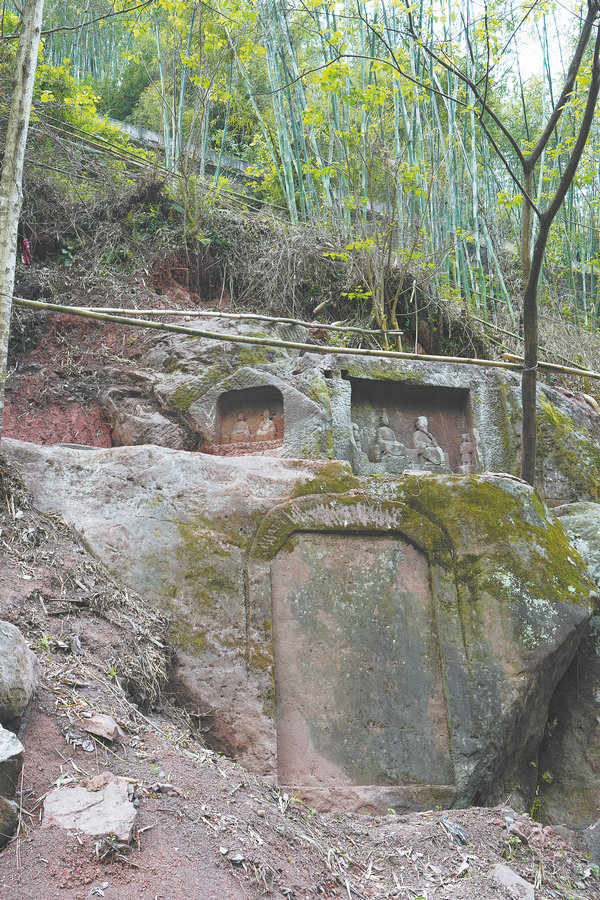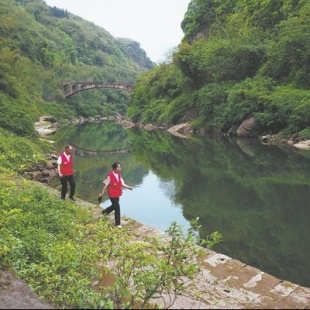Temple discovery rewards hard work
Finding lifts veil of history and inspires even more searches, Xu Lin reports in Luzhou, Sichuan.


Soon, two stone heads emerged from muddy deposits, encouraging them to work even harder. After removing mud, vegetation and tree roots for several hours, they couldn't believe their eyes when they saw the characters Caogong Ci carved on a stone slab beneath the main niche, confirming the site as the Ancestral Temple of Caogong.
"We were so thrilled! The greatest satisfaction is to discover new cultural relics," says Liu, a worker from the county's cultural relics protection and management office.
Within the main niche stand two figures — a male and a female — each 0.6 meters tall and 0.3 meters wide, adorned in Ming court regalia. There are also two other statues in another niche.
They also found a fractured stone slab bearing half of an antithetical couplet, with the other half missing, which is from a poem written by esteemed Ming scholar Yang Shen to extol Cao's achievement.
"It's an unprecedented discovery. Once the Qing Dynasty (1644-1911) official Dong Xince visited the county in search of the ancestral temple and composed a poem. In the past few years, several culture and history experts have attempted several times to locate it but all their efforts ended in failure," says Huang Ying, head of the county's cultural relics protection and management office.





































